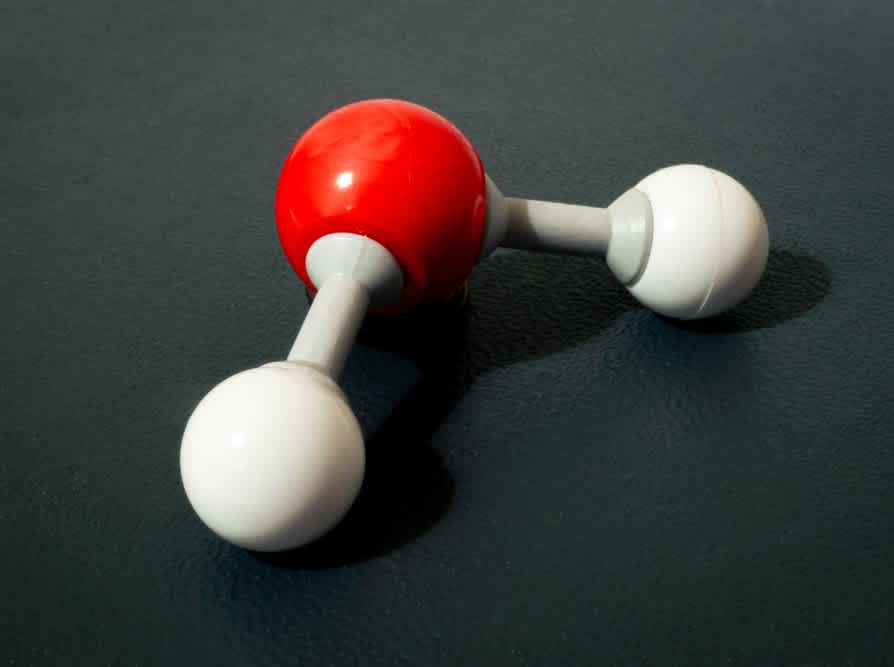Infrared spectroscopy
Infrared spectroscopy is a widely used analytical technique that provides quick and straightforward data on the atoms and molecules present in a sample and the way in which they bond to each other. IR spectroscopy has uses across all areas of organic and organometallic chemical research, ranging from chemical synthesis and drug discovery to petrochemicals, biomedicine, and food.

- Fast turnaround times
- Personal service from method experts
- Competitive prices
- Result accuracy guarantee
What is infrared spectroscopy used for?
IR spectroscopy is commonly used in pharmaceuticals and other consumer industries to quickly test samples for unwanted contaminants. Infrared spectroscopy is also used across all biochemical industries, ranging from medical to food, to test for selected proteins and other organic compounds.
How does infrared spectroscopy work?
In its simplest terms, IR spectroscopy works by passing a beam of infrared light through a sample. When the beam interacts with different chemical species in the sample, it will provide enough energy to cause the bonds in those molecules to vibrate in a variety of different ways. Some might stretch, bend, or even rock very rapidly. Portions of the infrared spectrum are absorbed during this process, with each absorbance corresponding to a specific type of bond and movement.
By measuring the infrared light transmitted through the molecule and taking notes of the sections of the spectrum that are absorbed, it is possible to determine which bonds are present. This provides key information about the chemical structure of the sample.
Sample requirements and preparation
IR spectroscopy can be performed on solids, liquids, and solutions, provided they are of a high enough purity. If the sample is to be tested in solution, care must be taken to ensure the solvent does not absorb infrared energy in the same region as the sample, as this may mask important information. Solid samples can be crushed into fine powder to achieve the best results.
Advantages and limitations of IR spectroscopy
Possibly the greatest advantage of IR spectroscopy is its speed. Analysis can be performed very quickly, leading to high throughput and allowing for several samples to be tested in quick succession. The wide range of suitable sample types also makes infrared spectroscopy incredibly versatile. Finally, IR is a non-destructive technique, so the sample can often be recovered afterward.
The main limitation of IR spectroscopy is its inability to provide full structural information in the way that techniques like NMR and mass spectrometry can. Therefore, IR must sometimes be used in conjunction with other techniques. Another downside is that any impurities, including water, can cause unwanted peaks to appear in the data that can mask valuable information.
What is the difference between IR and FTIR?
Fourier transform infrared spectroscopy (FTIR) is a more advanced form of infrared spectroscopy. In FTIR, IR light is reflected from a series of mirrors as it passes through the sample, allowing the light to interfere with itself. The mirror then moves, allowing a spectrum of data points to be collected. This produces a new set of data which, when passed through a data processing technique called a Fourier Transform, will provide a new spectrum for the sample.
These days, the majority of IR testing that is performed is, in fact, FTIR, as it offers a higher signal-to-noise ratio, accuracy, and speed.
Need an IR analysis?
Measurlabs offers high-quality IR spectroscopy analyses for various analytical purposes. Online, you can find information about our services for total organic carbon determination with IR and identification of chemical groups for aqueous and solid samples. Whether it’s just a dozen samples or a larger series, we offer competitive pricing and deliver reliable results quickly. Contact us using the form below to request a custom quote adapted to your specific needs and accounting for any volume discounts for large or recurring orders.
Suitable sample matrices
- Pharmaceuticals
- Crushed crystalline samples
- Organic samples in an appropriate solvent
- Organic liquid samples
- Bodily fluids
- Oil extracts
Ideal uses of IR spectroscopy
- Identifying unknown compounds
- Detecting specific functional groups in molecules
- Determining the presence of double and triple bonds
- General structure determination
- Detecting selected impurities
- Clarification of data gathered from other techniques
Ask for an offer
Fill in the form, and we'll reply in one business day.
Have questions or need help? Email us at info@measurlabs.com or call our sales team.
Frequently asked questions
Infrared spectroscopy is a common quality control method in the pharmaceutical and food industries. It can also be used to identify unknown substances.
Impurities, including water, can render the results of an IR spectroscopy analysis unusable, as they may mask the absorption spectra of the substance being analyzed. Other methods are also better suited for obtaining specific information about the structure of the compound.
Measurlabs offers a variety of laboratory analyses for product developers and quality managers. We perform some of the analyses in our own lab, but mostly we outsource them to carefully selected partner laboratories. This way we can send each sample to the lab that is best suited for the purpose, and offer high-quality analyses with more than a thousand different methods to our clients.
When you contact us through our contact form or by email, one of our specialists will take ownership of your case and answer your query. You get an offer with all the necessary details about the analysis, and can send your samples to the indicated address. We will then take care of sending your samples to the correct laboratories and write a clear report on the results for you.
Samples are usually delivered to our laboratory via courier. Contact us for further details before sending samples.